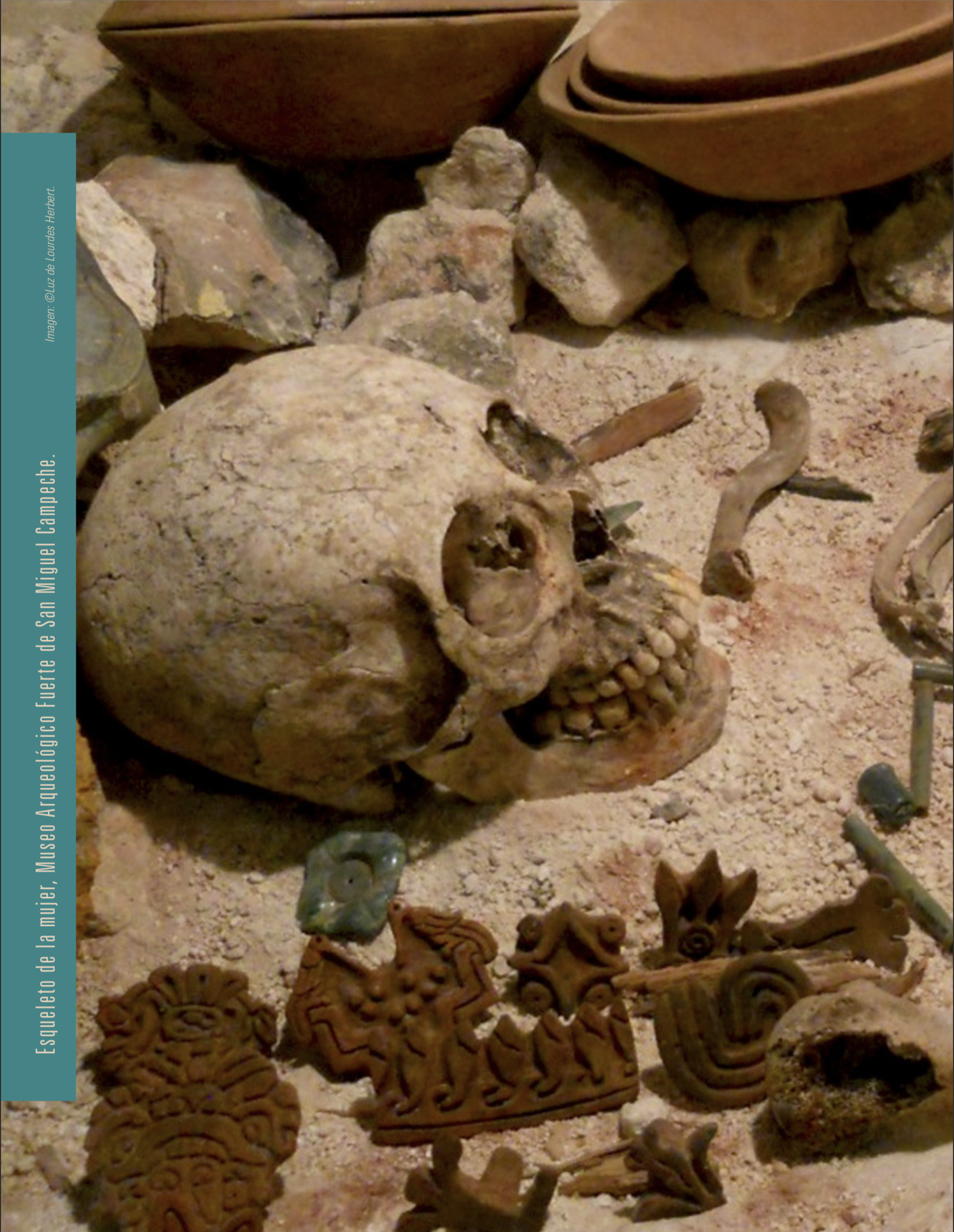
Published 2020-12-04
Keywords
- thematic interpretatio,
- meaningful dissemination of knowledge,
- conservation culture,
- Garra de Jaguar,
- Calakmul
- gender asymetry ...More
How to Cite
Abstract
This paper is an opportunity to make available to the readers a brief synthesis, in the form of a personal reflection, of my Master’s thesis in Museum Studies El museo y la promoción de la responsabilidad ciudadana en la conservación del patrimonio arqueológico; caso de estudio: ajuar funerario de “Garra de Jaguar”, mujer y niño, Museo Arqueológico Fuerte de San Miguel, Campeche, México, and to invite them to read it. I present its theoretical foundation, which were in the process of being developed at the time: the so-called “Thematic interpretation, Mexican style”, a communication strategy centered on visitors, that aims to make heritage values meaningful, in order to promote a culture of conservation, and which was applied to the study case. I highlight the mixture of methodologies employed to elaborate the resulting interpretation product: the short video “Sin hilo no hay tejido” (“Without thread there is no loom”); and narrate how the product was evaluated.
Downloads
References
- Darvill, Timothy, Mathers, Clay, y Little, Barbara J. (2005) Heritage of Value, Archaeology of Renown: Reshaping Archaeological Assessment and Significance (Cultural Heritage Studies), Gainesville, University Press of Florida.
- Falk, John H., y Dierking, Lynn (2000) Learning from Museum a visitor Experiences and the Making of Meaning, Boston, Altamira Press.
- Gándara, Manuel (2001) Aspectos sociales de la interfaz con el usuario, una aplicación en museos, tesis de doctorado en Diseño, México, Universidad Autónoma Metropolitana.
- Gándara, Manuel (coord.) (2009) Proyecto de Interpretación del Patrimonio Cultural de León. Documento Maestro [documento inédito], León, Instituto Cultural de León.
- Herbert, Luz de Lourdes (2015) El museo y la promoción de la responsabilidad ciudadana en la conservación del patrimonio arqueológico; caso de estudio: ajuar funerario de “Garra de Jaguar, mujer y niño”, Museo de Arqueología Fuerte de San Miguel, Campeche, tesis de maestría en Museología, México, Escuela Nacional de Conservación, Restauración y Museografía Manuel del Castillo Negrete -Instituto Nacional de Antropología e Historia.
- Larsen, David L. (2003) “An interpretive dialog”, en Meaningful Interpretation: How to Connect Hearts and Minds to Places, Objects, and Other Resources, Washington, Eastern National/National Park Service.
- Mosco, Alejandra (2012) Metodología interpretativa para la formulación y el desarrollo de guiones para exposiciones, tesis para obtener el grado de maestra en Museología, México, Escuela Nacional de Conservación, Restauración y Museografía.
- Pérez Santos, Eloísa (2000) Estudio de visitantes en museos: metodología y aplicaciones, Gijón, Ediciones Trea.
- Veverka, John A. (2015) Advanced Interpretive Planning, Edinburgh, MuseumsEtc Ltd.
- Villoro, Luis (1982) Creer, saber, conocer, México, Siglo XXI.
